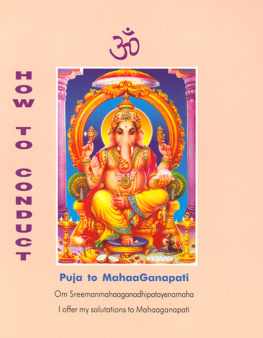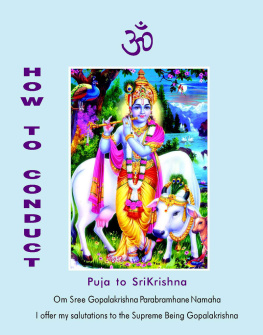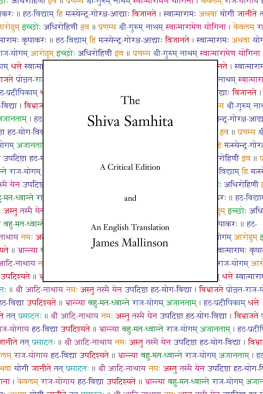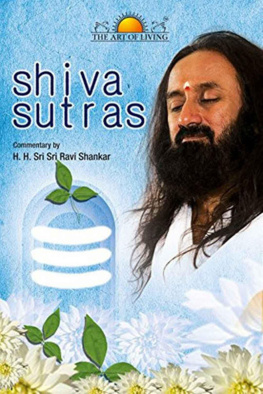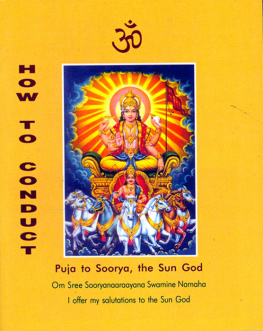
FOREWORD
by Sri Swami Satchidananda
Founder/Sri Gurudev: Integral Yoga Institutes and Satchidananda Ashram
The scriptures tell us that in this modern age, the easiest path to the Godhead is through Bhakti Yoga, the Yoga of devotion. I would say that the most valuable thing of all is to develop intense love for God. Sri Ramakrishna Paramahamsa called this Raga Bhakti or passionate attachment to God. With this kind of bhav you will be able to achieve every and any success in life.
Let us cultivate that raga bhakti through kirtan, japa, puja, and all our spiritual practices. Do whatever is necessary to gain that bhakti, and if you can irrigate the garden of your heart with the waters of bhakti, then there will be no real effort required to develop dispassion. You will be simply transformed by your sincere devotion and communion with God that all the worldly desires, attachments, vasanas, and samskaras will just fall right away.
What good comes of dwelling on ones own faults and flaws? How difficult it may be to overcome through sheer willpower some problem or some attachment? How simple it is to just immerse oneself in the practice of puja and of Bhakti Yoga? As your heart melts in love of God, love toward all and compassion for all beings begins to dawn; ones own selfish desires and preoccupations will fall away.
I am really delighted that our beloved Dr. A.V. Srinivasan has brought forth this wonderful series How to Conduct Puja. Let these booklets inspire you to conduct puja on a daily basis in your home and to impart these traditions to your children. Let us maintain our sacred traditions and spiritual practices because truly they hold the key to peace and success in life. I congratulate Dr. A.V. Srinivasan for his noble efforts and send my best wishes and blessings to all the readers.
OM Shanthi Shanthi Shanthi.

Preface
Worshipping ought to be a personal experience. At the philosophical level, the object of worship is worship itself. Nothing is sought as the end result. However, in order to reach that advanced level, we need to begin and practice praying systematically so that our faith in the Supreme Being is gradually strengthened. To start with, the object of our prayer may be that the Almighty grant us the wisdom to enhance our faith in Him so that we may make a deeper commitment as bhaktas (devotees). Faith is the critical element without which any ritual or religious practice is meaningless. To those who engage in worship of an ishtadevata (Godhead of ones choice), Krishna has an unambiguous warning that is essential for us to note. The message is found in verse 28 of Chapter 17 (Shraddhatraya Vibhaga Yoga) in the Gita.
Ashraddhayaa hutam dattam thapastaptham kritamcha yath
asad ithyuchyathe Paarttha na cha thath pretya no iha
Whatever is sacrificed, offered or performed and whatever austerity is practiced without faith,
it is falsehood, O Arjuna. And, further, it is of no value either here or hereafter.
We cannot sufficiently emphasize the powerful suggestion that is so easily and so often ignored. Krishnas warning is that we should never engage in a puja ceremony or any other ritual if our heart and mind are not singularly devoted to it. It should not be performed merely because it is the family tradition or it is the right thing to do or to satisfy someone else. The best reason is the most direct and simple reason and that is to surrender to God to seek His protection and pray for inner peace from the eternal conflicts that afflict humanity. Let us simply resolve to pray to Him to grant us the wisdom to have faith in Him and with that faith seek His infinite grace so that we can live a dhaarmic life full of joy and freedom as we serve Him and the society at large.
With faith as foundation, we can begin to develop the practice of worshipping a God/Goddess of our choice. However we need to understand and follow a systematic procedure. Further we need to create an environment in order to immerse ourselves in bhakti. This is precisely the logic in having puja rooms in Hindu households. In the United States and Canada, a new generation of Hindus is growing up and they need some assistance in learning the methods appropriate to their own framework so that they can perform pujas in the privacy of their homes or apartments. A series of these Puja booklets, with Sanskrit transliterations and English translations, are being published to fill this need. These How to Conduct booklets cover all major Hindu festivals with worships to the Sun God Soorya (Makarasankranti), Shiva (Shivaratri), Rama (Sriramanavami), Krishna (Janmashtami), Ganapati (Chaturthi), Durga (Vijayadashami), Saraswati (Vasanth Panchami and Navaratri), and Mahalakshmi (Diwali). Each booklet begins with an introduction that provides the background in regard to the particular God/Goddess, and includes a step-by-step procedure to prepare an altar, a list of materials needed, preliminary prayers, the worship and conclusion. Thus Hindu youngsters may be able to plan a whole year of festivities, perform the pujas and build their own tradition.
Table of Contents
Introduction
Shiva is one of the Hindu trinity that comprises the creator Brahma, the protector Mahaavishnu, and the godhead Shiva whose primary responsibility is maintaining the life cycle. Shiva is the only godhead who is forever in deep meditation, totally absorbed in contemplation in His abode, Kailaasa mountain in the great Himaalaya. Shiva is an ascetic and several religious stories and dramas portray that all attempts to distract Him from that principal pursuit through temptations always ended up with disaster for those initiating such an effort. Thus Kaama, the Lord of Desires, who tried such a distraction was burned alive through the fire when Shiva opened His third eye. On the other hand Shiva is all compassion when it came to saving the world from the serpent Vaasukis poison during the amritamanthana. Vaasuki, used as a churning rope, was so tired and sick from the repeated action of churning that he vomited the most potent poison into the ocean of milk. Fearing the destruction of the world through this poisoning, Shiva immediately drank the poison. He Himself would have succumbed to the poison were it not for the timely intervention by Paarvati, His consort. Paarvati held Shivas throat tightly preventing entry of the poison into His body. It is said that the arrested poison turned the throat to a blue color, thus the name Neelakantta, meaning blue-throated. The power of Lord Shivas eternal penance or tapascharya is such that it is customary to invoke Shiva before the beginning of any religious or spiritual endeavors so that any and all bad vibrations in the immediate vicinity of the worship or practice are eliminated by the mere utterance of His praise. When Hindus contemplate Shiva, the strongest impression received in their minds is an embodiment of eternal calm and peace, fully absorbed in deep thought of the Self, worshipful, humble, rigorous, and spiritual with total abandon in the context of anything materialistic. Shivas image appears to provoke the fundamental question: What is this life all about? and forces us to demand an answer such as sacrifice, worship and service as the potential elements towards salvation. Shiva is worshipped as a lingam to help us contemplate the need to think of Him as the most basic and essentially formless one. Shiva is commonly portrayed as an ascetic with a serpent around His neck, vibhooti (sacred ash) adorning His face and His essentially bare body, a trishul (trident) in one of His hands and a
Next page


